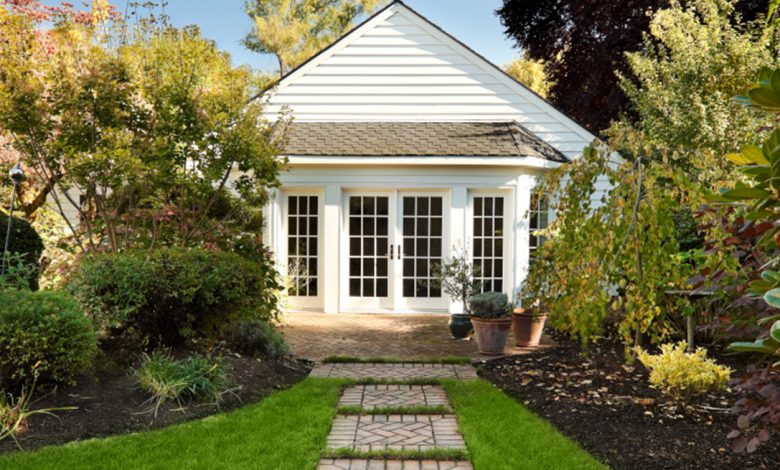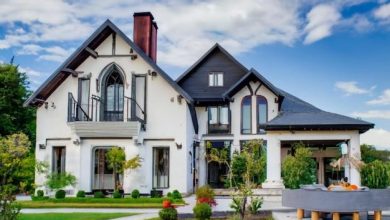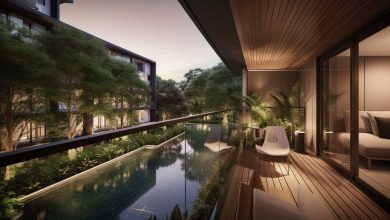From Backyards to Budgets: Exploring the Growing Trend of ADU Construction

In recent years, there has been a significant rise in the construction of Accessory Dwelling Units (ADUs) across the country, transforming backyards into fully functional living spaces. What was once seen as a quaint addition for visiting family members or an extra storage space has now become a popular solution to the ever-growing need for affordable housing. As cities grapple with housing shortages and rising costs, homeowners are turning to ADU construction as a creative way to maximize their property value and generate additional income. This article will delve into the reasons behind this growing trend, exploring how ADUs are reshaping urban landscapes and providing innovative solutions to housing challenges.
Table of Contents
Exploring the benefits of ADU construction
ADU construction, also known as accessory dwelling unit construction, is quickly gaining popularity for its numerous benefits. These self-contained living spaces, typically built in the backyard of existing homes, offer homeowners multiple advantages that go beyond providing additional living space. One significant benefit of ADU construction is the potential for supplemental rental income. Homeowners can choose to rent out their ADUs to tenants, increasing their monthly cash flow and offsetting mortgage costs. This additional income stream can be a game-changer for many families looking to make their homes more financially sustainable.
Another advantage of ADU construction is the flexibility it offers homeowners who may have changing needs over time. As homeowners age or circumstances change, having an ADU on their property allows them to maintain independence while still being close to family or caretakers. It also provides an opportunity for multigenerational living arrangements where grandparents or adult children can live separately while still sharing the same property as their families. This arrangement promotes close-knit family relationships while allowing everyone involved to have autonomy and privacy when needed.
The impact on housing affordability
One of the most significant impacts of accessory dwelling unit (ADU) construction is its potential to address the pressing issue of housing affordability. As urban areas become more densely populated and housing costs soar, ADUs offer a creative solution by providing additional, relatively affordable housing options within existing neighborhoods. This allows people to live in desirable locations while avoiding the high rent or mortgage payments associated with traditional homes. Moreover, ADUs have the potential to help alleviate the growing shortage of affordable rental units. With rental prices increasing at alarming rates, many individuals and families struggle to find suitable and affordable accommodation. By allowing homeowners to convert their unused spaces into rental units or by constructing new ADUs within their properties, cities can increase the supply of affordable rentals without significantly altering the character or density of established neighborhoods.
Overcoming legal and regulatory challenges
One of the biggest obstacles homeowners face when considering building an ADU (Accessory Dwelling Unit) is navigating through the legal and regulatory challenges. With different rules and regulations varying from city to city, it can be overwhelming to understand what’s allowed, what permits are needed, and how to meet all the requirements. However, despite these challenges, more and more people are successfully overcoming these obstacles and taking advantage of the benefits that ADU construction has to offer. A key strategy for overcoming legal and regulatory hurdles is doing thorough research on local laws and ordinances. Many cities have specific guidelines in place for ADUs, such as size restrictions or occupancy limits. By gaining a solid understanding of these regulations upfront, homeowners can ensure they are compliant with all necessary rules throughout the planning and construction phases.
Moreover, partnering with professionals who have experience working on ADU projects can be immensely helpful in navigating through complex legalities. Architects or designers who specialize in designing ADUs will likely already be familiar with local regulations and ordinances, making it easier to create plans that adhere to all necessary requirements.
Trends in ADU design and construction
In recent years, there has been a significant rise in the construction of accessory dwelling units (ADUs) all across the country. These secondary housing units, commonly referred to as granny flats or backyard cottages, have gained popularity due to their affordability and versatility. However, along with the increasing demand for ADUs comes an evolution in design and construction trends that are giving these small homes a modern twist.
One notable trend in ADU design is the emphasis on creating spaces that blend seamlessly with the surrounding environment. Homeowners are now opting for eco-friendly materials and sustainable building practices to construct their backyard dwellings. This includes utilizing energy-efficient windows and insulation, as well as incorporating natural elements like reclaimed wood or living walls into the design. The goal is to create an ADU that not only reduces its ecological impact but also complements its surroundings aesthetically.
Conclusion: The future of ADUs in housing
In conclusion, the grading of pre-inspection LADBS for ADU construction is an essential step towards ensuring safety and compliance with building codes. By implementing a thorough grading system, homeowners can have confidence in the quality of their ADUs and avoid costly mistakes or setbacks during the construction process. As we wrap up our exploration into the growing trend of accessory dwelling unit (ADU) construction, it becomes clear that these small, secondary units have a promising future in the housing market. ADUs offer a solution to two pressing issues: the increasing demand for affordable housing and the need for environmentally sustainable living options.
Firstly, ADUs provide an avenue for increasing affordable housing stock without drastically altering existing neighborhoods. With rising urban populations and limited available land for development, building up rather than out is becoming more popular. ADUs allow homeowners to utilize unused space on their property and generate additional income by renting them out or providing accommodations for family members.
Furthermore, as society becomes more conscious of our environmental impact, ADUs present a viable option for sustainable living. These smaller units typically require fewer resources to construct and maintain compared to traditional homes. Additionally, due to their smaller size, ADUs often boast higher energy efficiency ratings and reduced carbon footprints.
Looking ahead, local governments have recognized the potential benefits of ADU construction and are taking steps to ease regulations around their creation. Simplified permitting processes and incentivized funding programs are emerging across various cities as leaders strive to encourage more residents to embrace this alternative form of housing.
In conclusion, as we navigate through an ever-changing urban landscape characterized by rising population densities and environmental concerns, ADUs are poised to play an increasingly significant role in addressing these challenges head-on.




